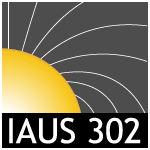A subpopulation of hot, luminous, massive stars have been revealed through spectropolarimetry to harbor strong (hundreds to tens of thousand gauss), steady, large-scale (often significantly dipolar) magnetic fields. This talk will focus on the role of such fields in channeling and trapping the radiatively driven wind outflow of such massive stars, including both in the strongly perturbed outflow from open field regions, and the wind-fed ''magnetospheres" that develop from closed magnetic loops. For B-type stars with weak winds and moderately fast rotation, one finds ''centrifugal magnetospheres'', in which rotational support allows magnetically trapped wind to accumulate to a large density, with quite distinctive observational signatures, e.g. in Balmer line emission. In contrast, more luminous O-type stars have generally been spun down by magnetic braking of angular momentum loss in their much stronger winds. The lack of centrifugal support means their closed loops form a ''dynamical magnetosphere'', with trapped material falling back to the star on a dynamical timescale; nonetheless, the much stronger wind feeding leads to a circumstellar density that is still high enough to give substantial Balmer emission. Overall, the talk will describe MHD simulations and semi-analytic dynamical methods for modeling the magnetospheres, the magnetically channeled wind outflows, and the associated spin-down of these magnetic massive stars.
|
|
|
|
Thursday
29
Session 3 - Origin and impact of magnetic fields in higher-mass stars with radiative outer layers
Chair: Stephen Marsden › 14:50 - 15:20 (30min) Wind channeling, magnetospheres, and spindown of magnetic massive stars
2 : University of Wisconsin Madison
3 : Penn State Worthington Scranton
|

 PDF version
PDF version
